Davood Fattahi
Noisy Neonatal Chest Sound Separation for High-Quality Heart and Lung Sounds
Jan 10, 2022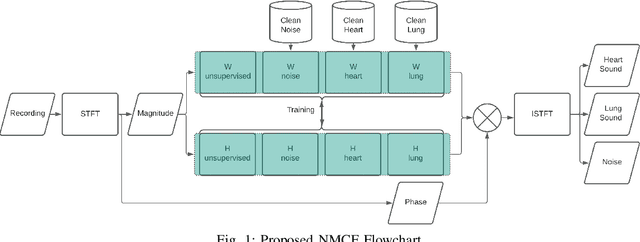
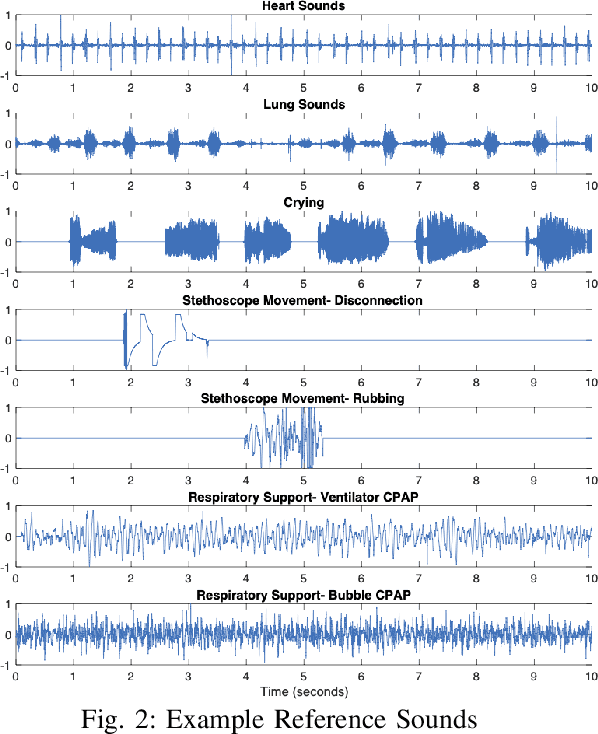
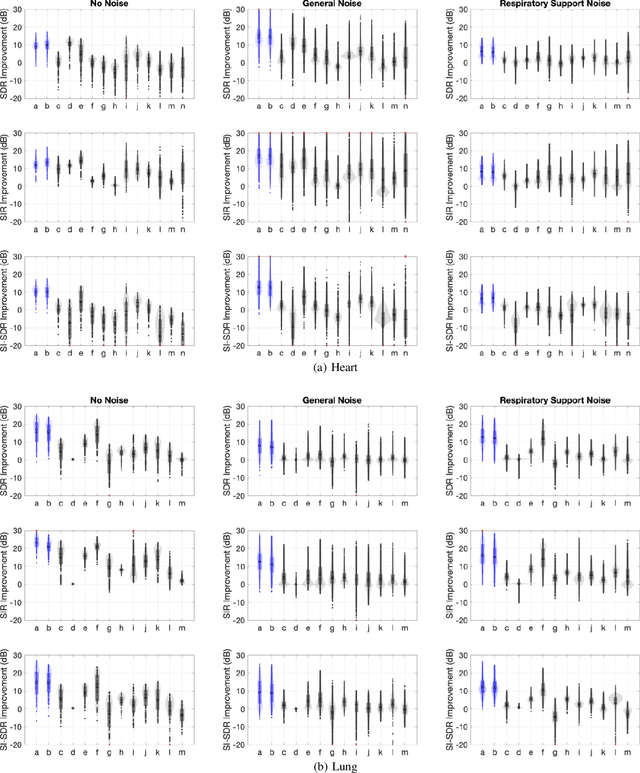
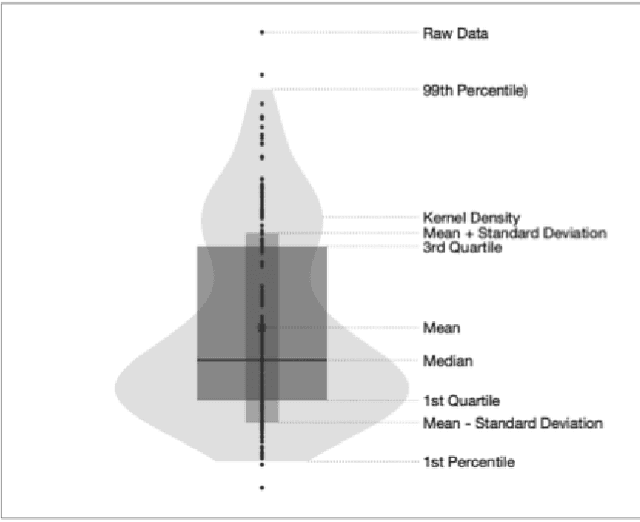
Abstract:Stethoscope-recorded chest sounds provide the opportunity for remote cardio-respiratory health monitoring of neonates. However, reliable monitoring requires high-quality heart and lung sounds. This paper presents novel Non-negative Matrix Factorisation (NMF) and Non-negative Matrix Co-Factorisation (NMCF) methods for neonatal chest sound separation. To assess these methods and compare with existing single-source separation methods, an artificial mixture dataset was generated comprising of heart, lung and noise sounds. Signal-to-noise ratios were then calculated for these artificial mixtures. These methods were also tested on real-world noisy neonatal chest sounds and assessed based on vital sign estimation error and a signal quality score of 1-5 developed in our previous works. Additionally, the computational cost of all methods was assessed to determine the applicability for real-time processing. Overall, both the proposed NMF and NMCF methods outperform the next best existing method by 2.7dB to 11.6dB for the artificial dataset and 0.40 to 1.12 signal quality improvement for the real-world dataset. The median processing time for the sound separation of a 10s recording was found to be 28.3s for NMCF and 342ms for NMF. Because of stable and robust performance, we believe that our proposed methods are useful to denoise neonatal heart and lung sound in a real-world environment. Codes for proposed and existing methods can be found at: https://github.com/egrooby-monash/Heart-and-Lung-Sound-Separation.
Real-Time Multi-Level Neonatal Heart and Lung Sound Quality Assessment for Telehealth Applications
Sep 29, 2021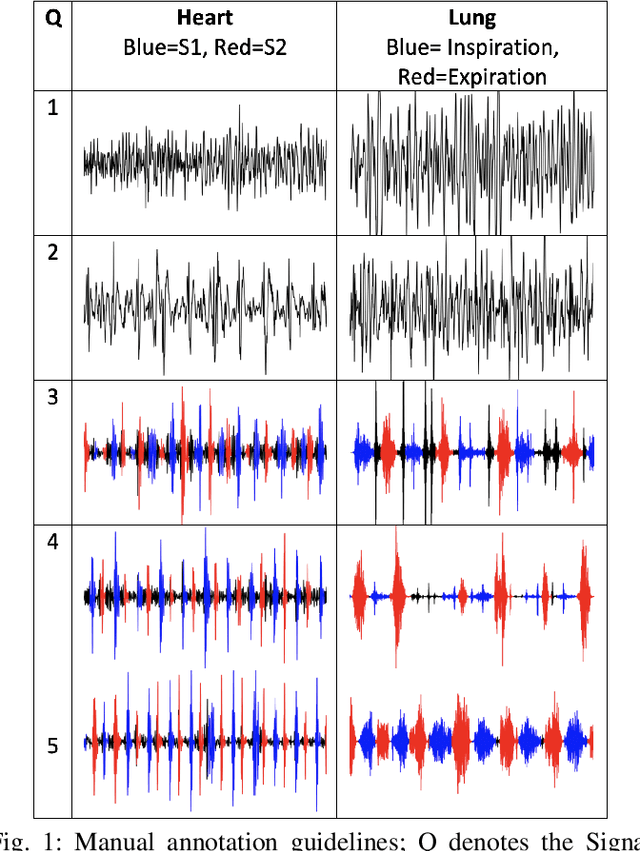
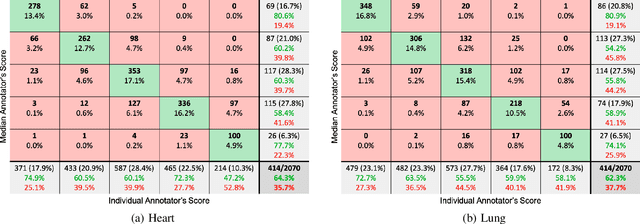
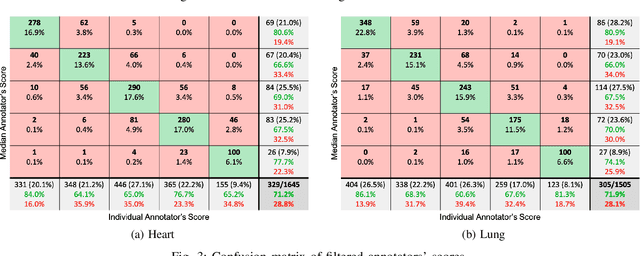
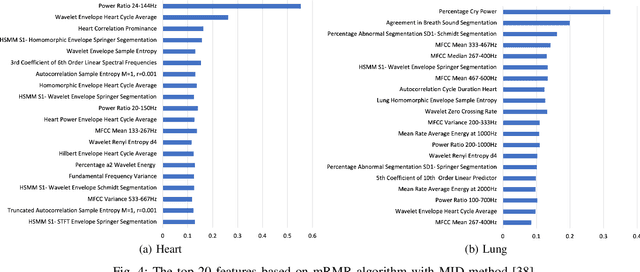
Abstract:Digital stethoscopes in combination with telehealth allow chest sounds to be easily collected and transmitted for remote monitoring and diagnosis. Chest sounds contain important information about a newborn's cardio-respiratory health. However, low-quality recordings complicate the remote monitoring and diagnosis. In this study, a new method is proposed to objectively and automatically assess heart and lung signal quality on a 5-level scale in real-time and to assess the effect of signal quality on vital sign estimation. For the evaluation, a total of 207 10s long chest sounds were taken from 119 preterm and full-term babies. Thirty of the recordings from ten subjects were obtained with synchronous vital signs from the Neonatal Intensive Care Unit (NICU) based on electrocardiogram recordings. As reference, seven annotators independently assessed the signal quality. For automatic quality classification, 400 features were extracted from the chest sounds. After feature selection using minimum redundancy and maximum relevancy algorithm, class balancing, and hyper-parameter optimization, a variety of multi-class and ordinal classification and regression algorithms were trained. Then, heart rate and breathing rate were automatically estimated from the chest sounds using adapted pre-existing methods. The results of subject-wise leave-one-out cross-validation show that the best-performing models had a mean squared error (MSE) of 0.49 and 0.61, and balanced accuracy of 57% and 51% for heart and lung qualities, respectively. The best-performing models for real-time analysis (<200ms) had MSE of 0.459 and 0.67, and balanced accuracy of 57% and 46%, respectively. Our experimental results underscore that increasing the signal quality leads to a reduction in vital sign error, with only high-quality recordings having a mean absolute error of less than 5 beats per minute, as required for clinical usage.
A New Non-Negative Matrix Co-Factorisation Approach for Noisy Neonatal Chest Sound Separation
Sep 04, 2021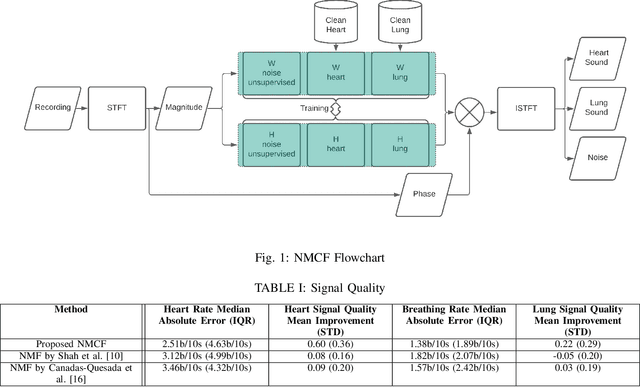
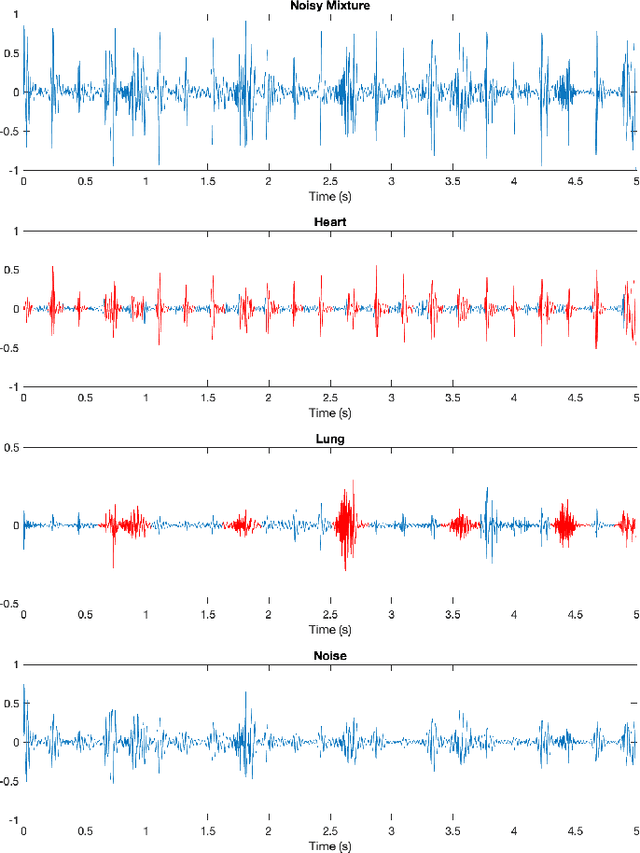

Abstract:Obtaining high-quality heart and lung sounds enables clinicians to accurately assess a newborn's cardio-respiratory health and provide timely care. However, noisy chest sound recordings are common, hindering timely and accurate assessment. A new Non-negative Matrix Co-Factorisation-based approach is proposed to separate noisy chest sound recordings into heart, lung, and noise components to address this problem. This method is achieved through training with 20 high-quality heart and lung sounds, in parallel with separating the sounds of the noisy recording. The method was tested on 68 10-second noisy recordings containing both heart and lung sounds and compared to the current state of the art Non-negative Matrix Factorisation methods. Results show significant improvements in heart and lung sound quality scores respectively, and improved accuracy of 3.6bpm and 1.2bpm in heart and breathing rate estimation respectively, when compared to existing methods.
 Add to Chrome
Add to Chrome Add to Firefox
Add to Firefox Add to Edge
Add to Edge